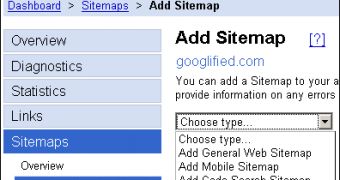It's no secret that Google has been indexing video content from other video hosting sites for quite a while now, rendering unto Caesar the things that are Caesar's, with YouTube playing the part of Caesar for this movie. Most movies came from larger video sites, such as Metacafe or Crackle, and were sometimes mixed with Break and AOL Uncut.
Nothing, however, from the smaller video hosting services or from the independent video publishers that have refused usage of those services, mostly because of the low quality video encoding. Fret not, readers in the very same position, the salvation is at hand. At your hand, actually, you can bypass the filter that Google had set up against this type of media and have your video show up in the Google Video search results page.
The newly introduced Google Webmaster Tools have the option to send Google a Video Sitemap, which you will have to create and then just hit the submit button and you're home free. Of course, it would be a lot easier if you had the videos organized, especially in a database.
Google says that, when creating your Video Sitemap, you should consider the following:
"1. A Video Sitemap should contain only URLs that refer to video content. Video content includes web pages which embed video, URLs to players for video, or the URLs of raw video content hosted on your site. If Google cannot discover video content at the URLs you provide, those records will be ignored by Googlebot. 2. Each video is uniquely identified by its content URL (the location of the actual video file) or, if a content URL is not present, a player URL (a URL pointing to a player for the video). 3. Each Sitemap file that you provide must have no more than 50,000 video items and must be no larger than 10MB when compressed. An individual video file or thumbnail (specified in the and tags, respectively) can be no larger than 30MB. If you have more than 50,000 videos, you can submit multiple Sitemaps and a Sitemap index file. 4. Google can crawl the following video file types: .mpg, .mpeg, .mp4, .mov, .wmv, .asf, .avi, .ra, .ram, .rm, .flv. All files must be accessible via HTTP. Metafiles that require a download of the source via streaming protocols are not supported. 5. The URLs included in the Sitemap must have their robots.txt file set appropriately for UserAgent 'Googlebot'."
That's it, you do that after you follow their tutorial, in case you don't know how to do it all by yourself and your videos are crawlable, and they will be where you want them to be. Ta-daa!

 14 DAY TRIAL //
14 DAY TRIAL //